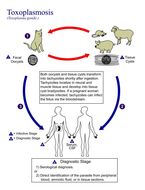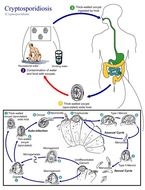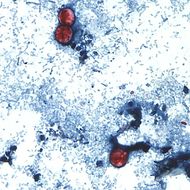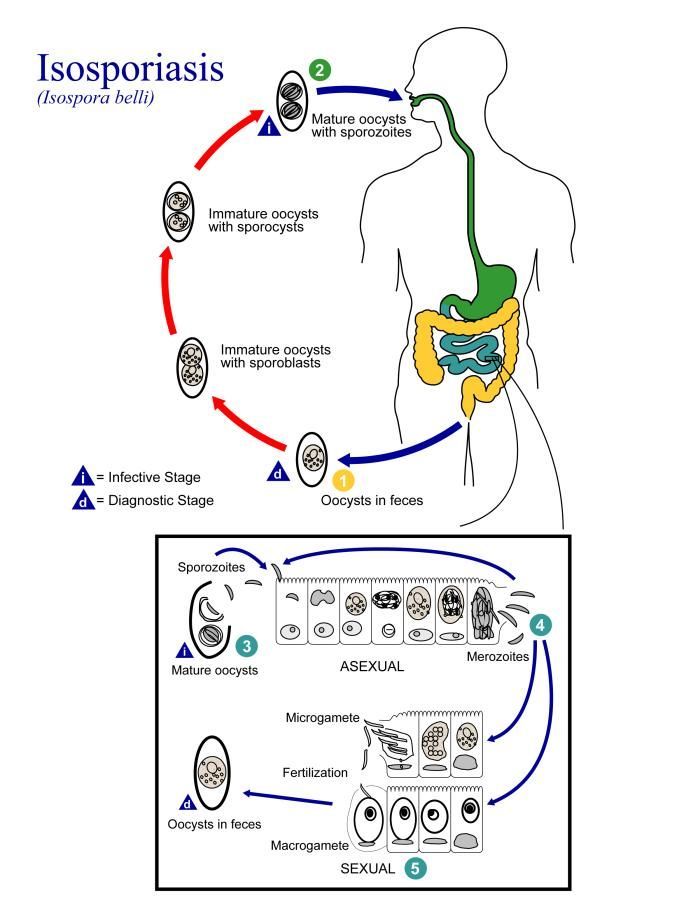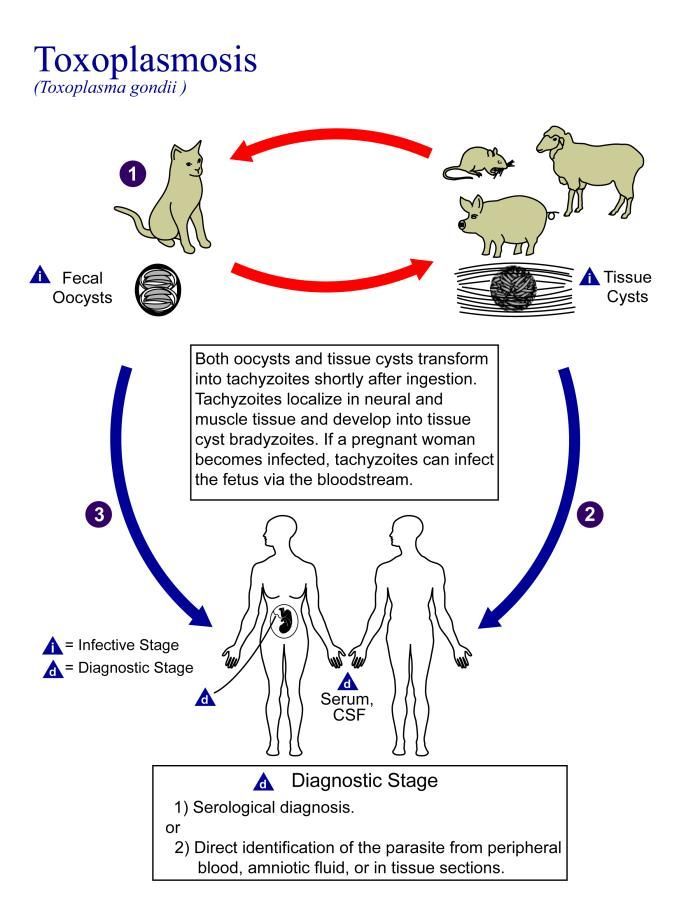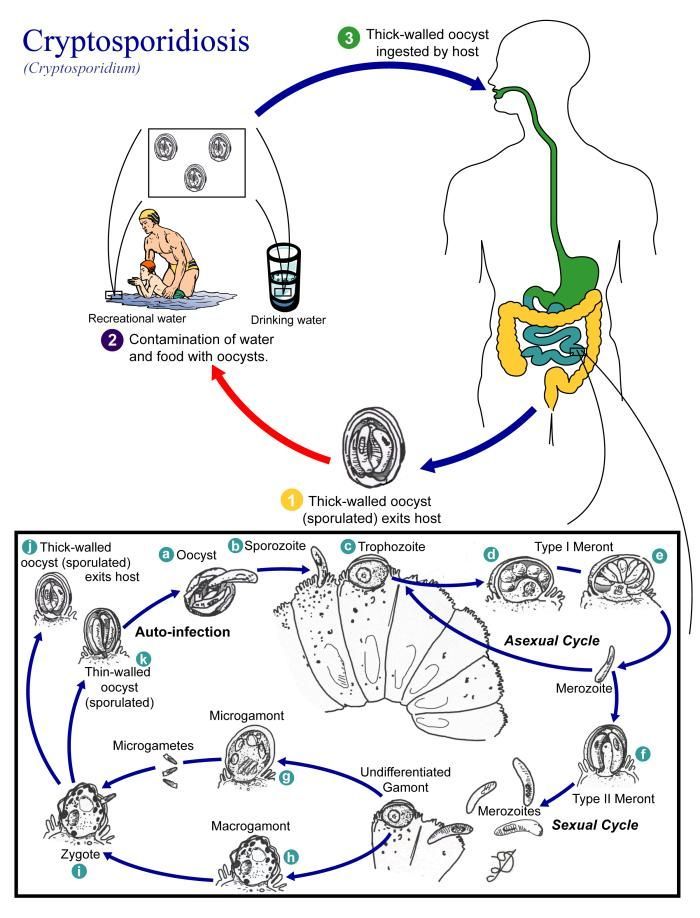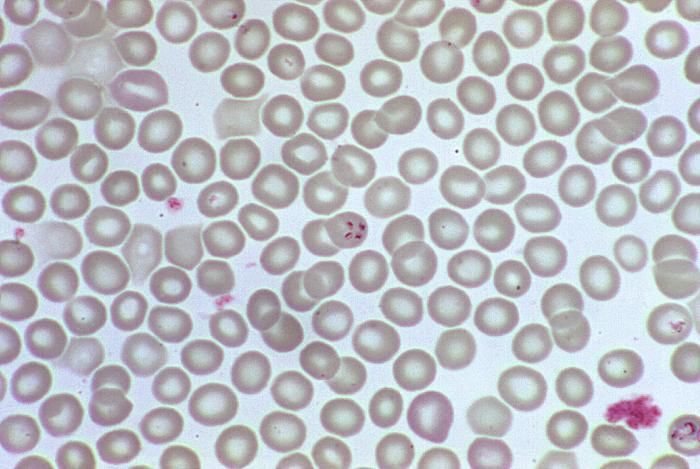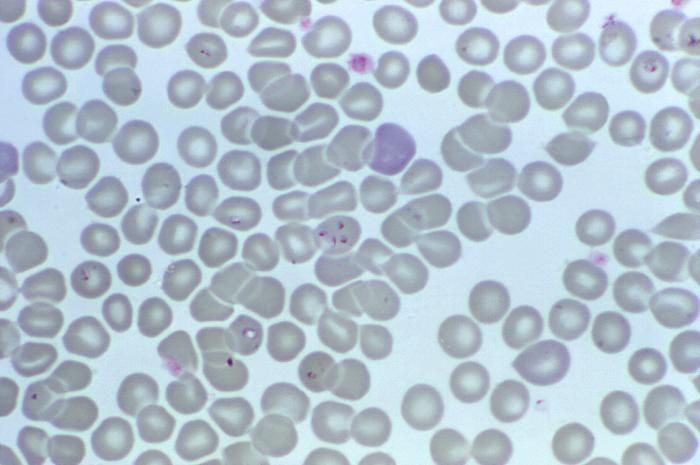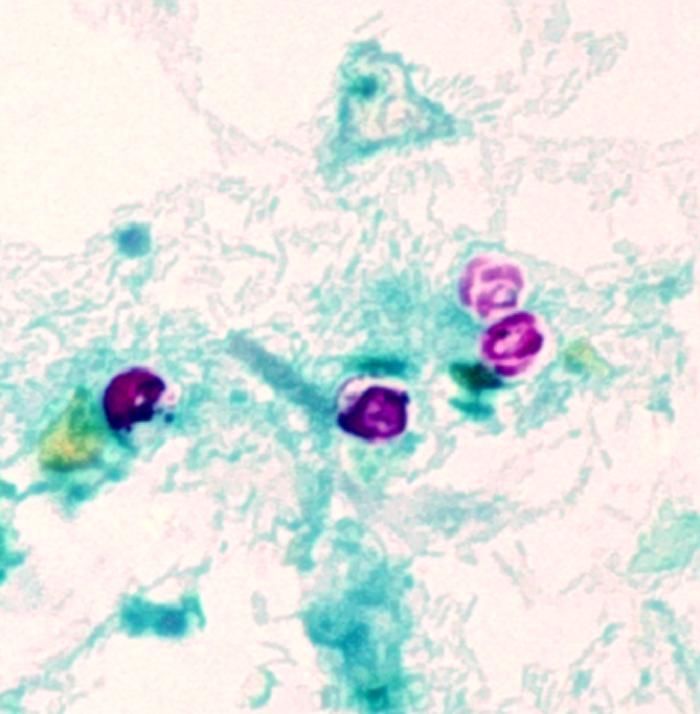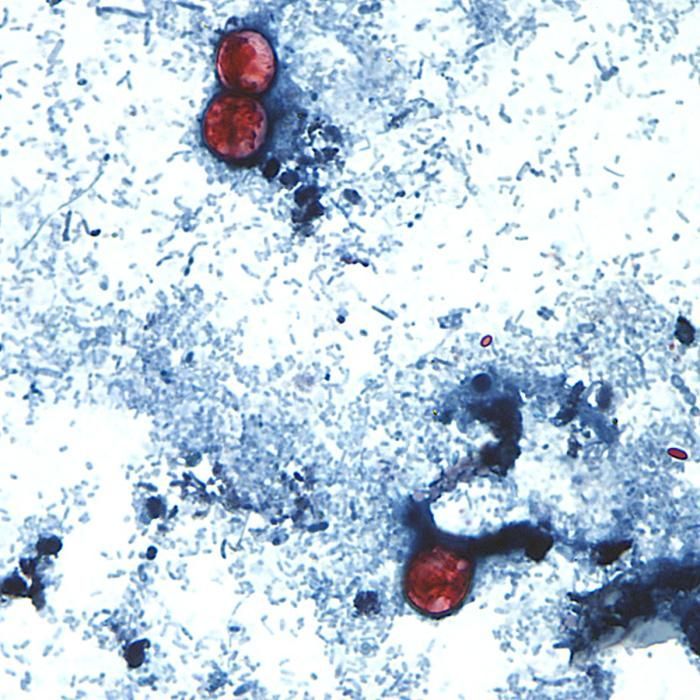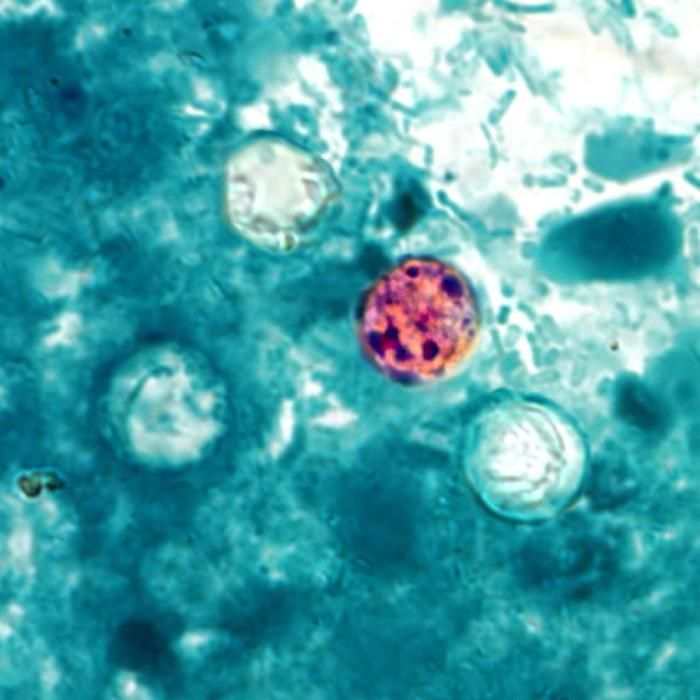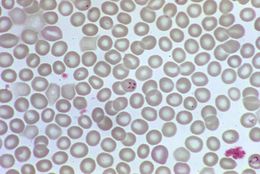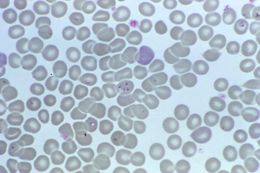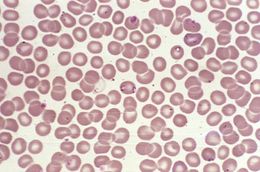-
This is an illustration of the life cycle of Isospora belli, the causal agent of Isosporiasis.Created: 2002
-
This is an illustration of the life cycle of Toxoplasma gondii, the causal agent of Toxoplasmosis.Created: 2002
-
This illustration depicts the life cycle of different species of Cryptosporidium, the causal agents of Cryptosporidiosis.Created: 2002
-
Note the developmental tetrad configuration of these Babesia sp. trophozoites, which resemble P. falciparum.Created: 1973
-
Note the developmental tetrad configuration of these Babesia sp. trophozoites, which resemble P. falciparum.Created: 1973
-
Magnified 1000X, this photomicrograph revealed the presence of what were determined to be numbers of intraerythrocytic Babesia sp. ring-form parasites.Created: 1974
-
This photomicrograph revealed the morphologic details of Cryptosporidium parvum oocysts, i.e.,encapsulated zygotes, which had been stained using the modified acid-fast method. These oocysts exhibit a bright red coloration when using this staining technique, and in this case, youll note the sporozoites that were made visible inside the two oocysts on the right. Sporozoites are the nucleated, motile stage of development through which many protozoans pass such as C. parvum, on their way to becoming adults, and represent a very infectious form of these organisms. The sporozoites will be released from these C. parvum oocysts.Created:
-
This photomicrograph of a fresh stool sample, which had been prepared using a 10% formalin solution, and stained with safranin, revealed the presence of three uniformly stained Cyclospora cayetanensis oocysts in the field of view.Created:
-
This photomicrograph of a fresh stool sample, which had been prepared using a 10% formalin solution, and stained with modified acid-fast stain, revealed the presence of four Cyclospora cayetanensis oocysts in the field of view. Compared to wet mount preparations, the oocysts are less perfectly round and have a wrinkled appearance due to this method of fixation. Most importantly, the staining is variable among the four oocysts.Created:


